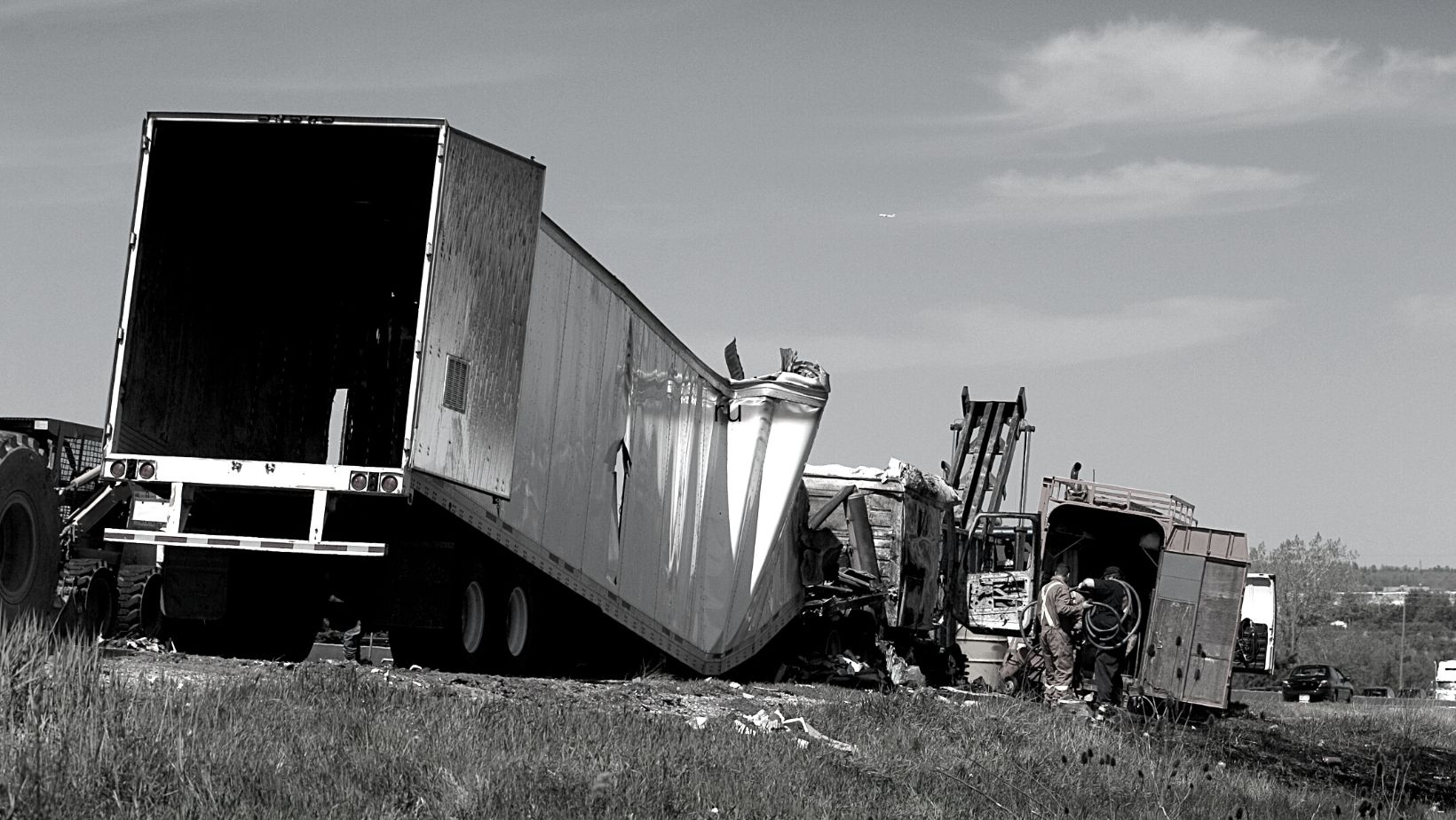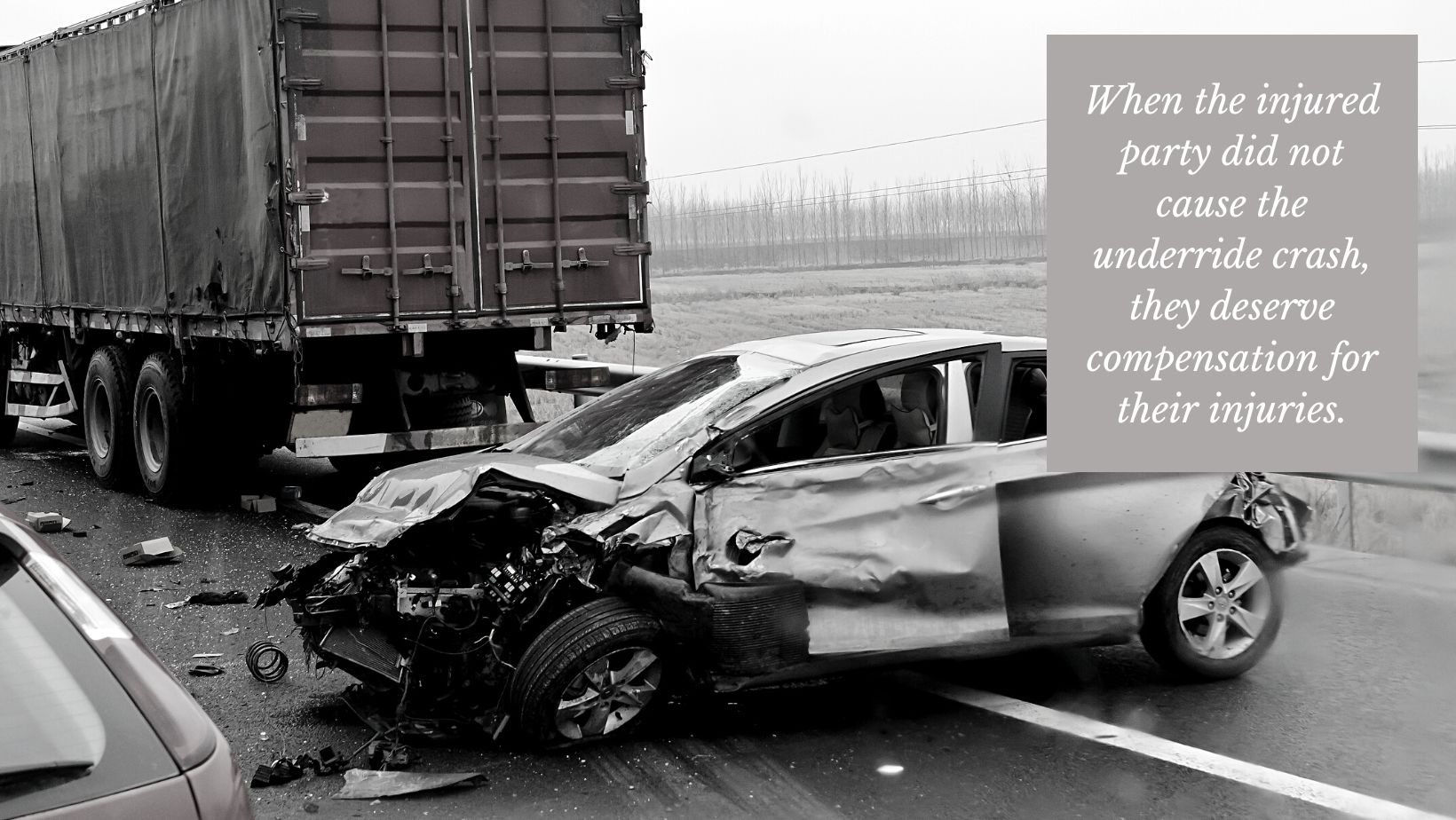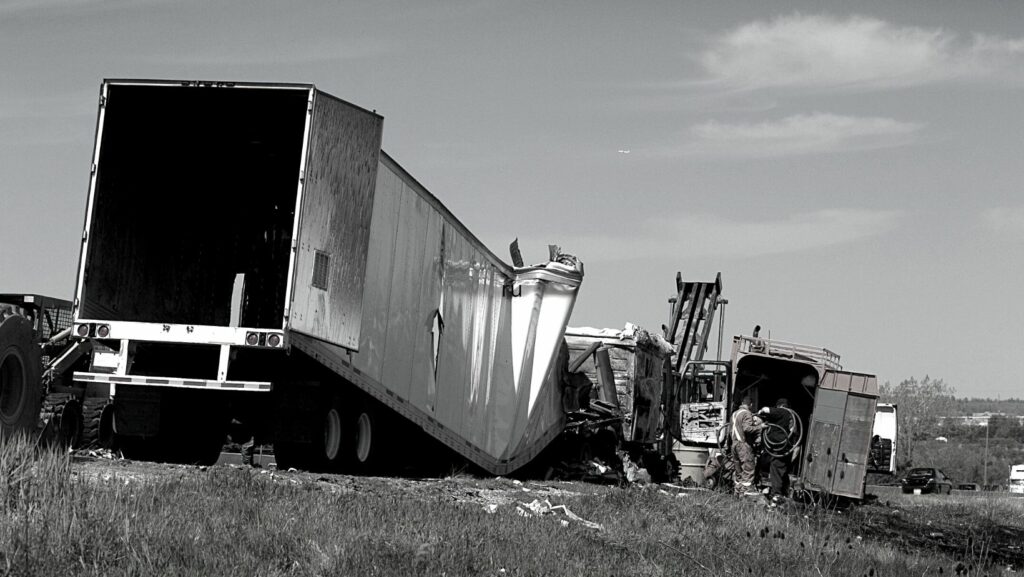Cars of all sizes share the road with huge semi-trailer trucks. It is inevitable that they will sometimes collide. The weight of these trucks can make the impact deadly, and their height off the ground makes an underride crash more likely.
 Image by Canva.com
Image by Canva.com
An underride crash is when a smaller vehicle (a passenger car or motorcycle) ends up underneath a truck or any other large, tall vehicle. Underride crashes can be devastating both in the amount of damage to the car and the severity and types of injuries to drivers and passengers.
What Does an Underride Crash Look Like?
In a typical collision, two vehicles hit and either spin around or move in whatever direction the impact pushes them. In an underride collision, however, one vehicle is significantly taller than the other. Upon impact, the smaller of the two drives under the back end, side, or corner of the larger vehicle. Underrides often happen with semi trucks, but they can occur with any conveyance that has enough room underneath. This can include buses, construction equipment, farm implements, or even some larger pickup trucks.
The front end, or even an entire car, can be crushed and wedged under a truck, making recovery of the driver and passengers difficult and dangerous. Even though the truck might not sustain much damage, the car in this type of crash is often a total loss. And tragically, there is a high probability of serious injuries and even fatalities in an underride crash.
Types of Damage and Injuries in an Underride Crash
The impact of an underride collision typically crushes the car’s frame, breaks the windshield, and can shear off the roof. This type of damage puts anyone inside the car in extreme danger.
In the worst crashes, there are fatalities due to blunt force trauma or decapitation. The injured might be trapped in the car and must wait for first responders to extract them.
It is unlikely that a victim will walk away without at least some significant injuries. In addition to the usual cuts, bruises and broken bones, underrides can result in spinal cord injuries, loss or damage of internal organs, amputation of limbs, and traumatic brain injuries.
Immediate medical needs as well as long-term rehabilitation and care will be expensive. In some cases, the injuries can be life-altering and debilitating. If a full recovery is possible, it can take weeks, months, or even years before the victim is fully healed.
When the injured party did not cause the underride crash, they deserve compensation for their injuries. Being able to prove who is liable is crucial, and starts with understanding how underrides happen.
 Image by Canva.com
Image by Canva.com
Circumstances That Contribute to Underride Collisions
Underrides can occur at any time and anywhere there are large trucks on the road. Sometimes the causes are due to the characteristics of the vehicle itself. But just like other accidents, things like road conditions and driver behavior can contribute.
- Poor visibility. Because trucks are so big, they have several blindspots where the driver can not see other vehicles through the windows or in their mirrors. The driver might change lanes, merge onto a highway, or back up into—and over—a smaller car without realizing it.
- Wide turns. Truck drivers trying to maneuver through intersections or around tight corners might veer outside of their designated lane. A car that does not realize this might drive under the side of the truck as it turns.
- Steep grades. An empty tractor trailer can weigh 20,000 pounds and with cargo it is legally allowed to weigh up to 80,000. It will take a long time for something that big to stop on a flat surface, let alone the more mountainous regions in New Mexico.
- Weather. Ice, snow, rain, and fog all add to the difficulty of driving a big rig.
- Equipment malfunction. Faulty brakes on either the truck or a car can contribute to crashes. Or, a driver might not see a truck in time to avoid hitting it if its back-end marker lights aren’t working.
- Driver impairment. Collisions may happen if the driver of either vehicle is distracted, fatigued, or impaired in some way.
- Negligent driving. An underride crash is more likely to happen if a truck or passenger vehicle is speeding or following too close. Quick lane changes, careless merging, and cutting off another vehicle are dangerous too.
Any of these factors, or a combination, can help determine the facts of a crash, and ultimately who bears responsibility.
Who is Responsible for an Underride?
When it comes to underride accidents, the larger vehicle is not always to blame. All drivers have a duty of care, meaning they have a responsibility, regardless of size, to ensure the safety of others on the road. A car might follow a truck too closely and suffer an underride collision when they can not stop in time. Or, they might run a red light and underride into the side of a semi. In these situations, the truck driver might not be liable for the car driver’s injuries.
However, truck drivers need to take precautions because of their vehicle’s size. They must be cautious about blind spots and how long it takes them to stop. When a truck driver’s carelessness causes an underride crash, they can be held liable for injuries to the driver and passenger of the car.
The company who employs the trucker might be partly responsible too. Commercial vehicles are subject to regulations written by the Federal Motor Carrier Safety Administration (FMCSA). These require drivers to have proper training and licensing, cap the number of consecutive hours behind the wheel, and to undergo periodic drug testing. And the vehicles themselves must meet certain maintenance standards.
In an attempt to reduce the chances of underride crashes, the U.S. Department of Transportation requires large vehicles to have rear guards (special bumpers meant to keep underrides from happening) and reflective tape, although some agricultural vehicles and tow trucks are exempt. If trucks are stopped on the side of the road, they must use flares or reflective safety triangles or cones to prevent a car from hitting them in the dark.
Failure to take these precautions can be considered negligence, resulting in the driver, the company, and sometimes even a third party mechanic hired to service the company’s fleet of trucks sharing in the responsibility for an underride crash.
Victims will likely need help proving who was at fault in an underride collision, as well as dealing with the multiple parties (and insurance companies) involved. Hiring an attorney with experience in commercial truck accidents is the first step toward getting compensation from whoever is responsible.
Seeking Help With a Settlement
Underride collisions can often be even more traumatic and result in greater injuries than other types of accidents. This means both the economic and non-economic damages usually amount to more too.
Those hurt in an underride crash will likely need to pay for:
- Ambulance and emergency services
- Tests and x-rays
- Surgery
- Hospital stays
- Medications
- Doctor visits
- Physical therapy
- Follow up care
- Ongoing care if permanently disabled
In addition, victims will have lost wages to recoup. They may also be due compensation for pain, suffering, and emotional distress. In the tragic event that someone lost their life, their loved ones are entitled to wrongful death compensation.
To navigate the aftermath of an underride crash and get full and fair compensation, start by consulting with the attorneys at Kane Personal Injury. Our firm’s experience in personal injury cases involving trucks allows us to win the maximum settlements for our clients. Contact us for a free consultation as the first step toward compensation for a full recovery.
Please note that this article was created for advertisement purposes, and it does not constitute any contractual legal relationship, nor imply one.
